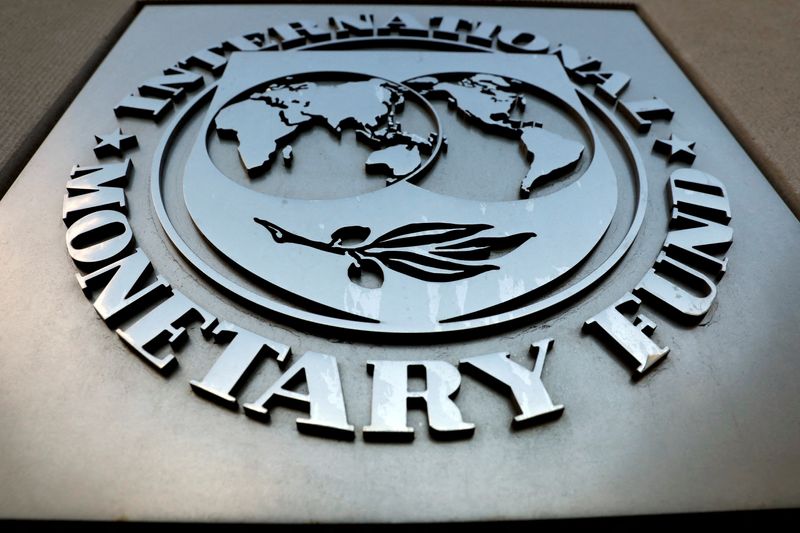Column-From political fog, world growth doubts creep back in: Mike Dolan
2024.07.17 02:21
By Mike Dolan
LONDON (Reuters) – In all the hubbub about election uncertainty and the dash for the most lucrative financial trades to exploit it, creeping doubts about the resilience of the world economy are re-emerging.
To be sure, you won’t see much of that in the International Monetary Fund’s latest global growth forecasts on Tuesday. They look serene, if unspectacular, at 3.2% for this year and the Fund even nudged up 2025 a notch to 3.3% from April’s call.
Global stock market indexes at record highs seem blissfully unperturbed – lapping up a diet of this “soft landing” for the U.S. and major economies and viewing unfolding interest rate cuts across the G7 as a safety net.
But given the prospect of seismic changes to the global economic and geopolitical landscape from a reelection of Donald Trump to the White House in November – and in light of the boost to his chances of victory following Saturday’s failed assassination attempt – the picture seems a little too perfect.
For a start, the IMF forecasts were compiled before news of a big miss in China’s second-quarter growth reading – which, at 4.7%, came in well below the 5% rate economists had expected and which Beijing now targets.
Even though the IMF had lifted 2024 China expectations to 5% for the first time, its chief economist Pierre-Olivier Gourinchas admitted the new numbers pose a “downside risk” to that scenario already. Goldman Sachs and JPMorgan already moved to pare back their views on Monday.
With China still suffering deflation due to a property bust in which house price drops are still deepening, inflation-adjusted Chinese nominal growth is actually closer to 4%.
And presumably that forecast for the world’s second-largest economy does not yet include what Trump pledges is in store on trade tariffs if he is elected – a sweeping 60% on Chinese imports alongside 10% universal tariffs.
What’s more, assuming Chinese demand problems directly affect slow-growing Europe and other emerging markets more than the United States, due to greater direct trade exposure, then the ripple effects increase.
Even before the Trump shooting catapulted betting odds further in his favor, global investors were already experiencing gnawing doubts about the growth outlook at large.
While most stick to a “soft landing” scenario overall, Bank of America’s global fund manager survey for July showed the net percentage of those seeing a weaker world economy over the next 12 months surged 21 points to a six-month high of 27%.
And “geopolitical conflict” replaced higher inflation as the most-cited “tail risk” for the first time in five months.
TROUBLE AHEAD
Of course, Trump’s trade plans – which merely supercharge trade tariffs and curbs introduced under President Joe Biden – are in part intended to balkanize the world economy and bias domestic U.S. firms and workers.
That aspect of “U.S. exceptionalism” is also at play this week with a significant stock market shift toward small-cap U.S. stocks and away from mega-cap global giants.
But if a second Trump administration were to face gridlock in Congress, Pictet’s head of macro research, Fred Ducrozet, thinks the resulting inability to offset promised tariff rises and immigration curbs with tax cuts could produce a net negative U.S. growth near term.
Even if the U.S. economy at large can somehow sidestep a ratcheting of world trade tensions and likely retaliation against U.S. goods, some worry the domestic inflation impact of tariff hikes could tear the interest rate safety net protecting against any slowdown.
JPMorgan economists estimate a 60% tariff on all Chinese imports would raise the U.S. price level 1.1%, while a 10% universal tariff would raise the price level by 1.5%. And they reckon it could lead to 5% appreciation of the dollar – another growth headwind for emerging markets around the world.
The extent to which this new price pulse limits scope for Federal Reserve easing is then open to question.
On the other hand, both Trump and his newly appointed running mate J.D. Vance have repeatedly opposed a “strong dollar” policy and blamed it for hollowing out U.S. manufacturing by cheapening imports.
If they are elected, this take may simply manifest in increased political pressure on the Fed to cut interest rates and keep them low – even if the Fed has the institutional armor to resist.
Even the perception of a compromised Fed along with mounting fiscal worries may irk long-term inflation concerns by lifting Treasury borrowing rates at the back end of the curve.
What’s more, Apollo Global Management (NYSE:) chief economist Torsten Slok this week outlined how once highly correlated U.S. and Chinese business cycles were already decoupling due to the latter’s property bust and dire demographics.
But he posits that if there is any slowdown in the United States it will simply “magnify the ongoing slowdown in China.”
None of these scenarios make for clean lines of course.
Back in 2016, Wall Street juddered ahead of the election on the risks it then associated with a Trump presidency – only to surge on tax-cut promises and reflation trades when he won.
But his ensuing trade war with China back then did eventually sap world growth – dragging it below 3% in 2019 for the first time in 10 years, even though China was growing significantly faster then than it is now.
For what appears to be a slightly nervy global investment community hogging record-high stocks, that may be an increasingly uncomfortable thought.
For all calm waters ahead suggested by the IMF’s new forecasts, the IMF’s Gourinchas knows the risks of unilateral trade curbs.

“It will distort trade and resource allocation, spur retaliation, weaken growth, diminish living standards, and make it harder to coordinate policies that address global challenges,” he concluded in a blog on Tuesday.
The opinions expressed here are those of the author, a columnist for Reuters.








